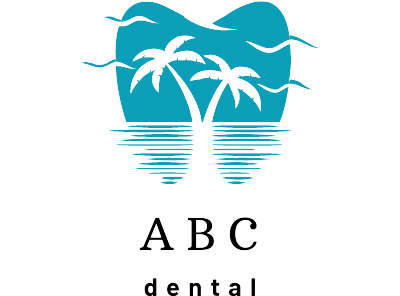Renal colic, a condition characterized by excruciating pain in the lower back or abdomen, affects millions of people worldwide. Understanding the causes, symptoms, and diagnosis of renal colic is crucial for proper treatment and management of this condition. In this article, we will explore the various aspects of renal colic, including its causes, symptoms, and the diagnostic techniques used to identify it. Additionally, we will delve into the effective treatment options available, including medications, procedures, and lifestyle changes. Lastly, we will provide valuable tips for maintaining kidney health and preventing future episodes of renal colic. By the end of this article, readers will have a comprehensive understanding of renal colic and be equipped with the knowledge to manage and prevent this debilitating condition.
1. Understanding Renal Colic: Causes, Symptoms, and Diagnosis
Renal colic refers to severe pain caused by the obstruction of urine flow from the kidneys to the bladder. It is usually a result of kidney stones, which are formed when concentrated minerals and salts accumulate in the kidneys. This condition affects both men and women, with men being more prone to developing kidney stones.
The most common symptom of renal colic is excruciating pain, which typically begins in the flank area and radiates towards the groin. The intensity of the pain can be unbearable and may come in waves, lasting for several minutes or even hours. Patients often describe it as one of the worst pains they have ever experienced.
Other symptoms associated with renal colic include blood in the urine, frequent urination, cloudy or foul-smelling urine, and a persistent urge to urinate. Patients may also experience nausea, vomiting, and restlessness due to the severe pain.
Diagnosing renal colic involves a combination of medical history, physical examination, and imaging tests. The healthcare provider will inquire about the patient’s symptoms, medical history, and any previous episodes of kidney stones. A physical examination may reveal tenderness in the flank area or lower abdomen.
To confirm the diagnosis, imaging tests such as an ultrasound, CT scan, or X-ray may be performed. These tests are helpful in identifying the presence and location of kidney stones, as well as evaluating the extent of the obstruction.
The causes of renal colic are primarily related to the formation of kidney stones. Factors that contribute to stone formation include dehydration, a diet high in sodium and oxalate, certain medications, and underlying medical conditions like urinary tract infections or hyperparathyroidism. Additionally, a family history of kidney stones can increase an individual’s
2. Effective Treatment Options for Renal Colic: Medications, Procedures, and Lifestyle Changes
Renal colic, characterized by severe pain in the flank or lower back, is often caused by kidney stones or urinary tract obstruction. Prompt diagnosis and effective treatment are crucial to alleviate the excruciating pain and prevent further complications. In this section, we will explore various treatment options for renal colic, including medications, procedures, and lifestyle changes.
1. Medications:
Medications play a vital role in managing renal colic by relieving pain, controlling inflammation, and facilitating the passage of kidney stones. Nonsteroidal anti-inflammatory drugs (NSAIDs) such as ibuprofen and naproxen sodium are commonly prescribed to alleviate pain and reduce inflammation. These medications work by inhibiting the production of prostaglandins, which are responsible for pain and inflammation.
In cases where NSAIDs are contraindicated or ineffective, opioids may be prescribed to manage severe pain. However, opioids are generally used for short-term pain relief due to their potential for addiction and side effects such as drowsiness and constipation.
Additionally, alpha-blockers such as tamsulosin are prescribed to relax the muscles in the ureter, helping to facilitate the passage of kidney stones. These medications can increase the likelihood of stone passage and reduce the need for more invasive procedures.
2. Procedures:
When medications alone are not sufficient to treat renal colic, various procedures may be employed to remove or break down kidney stones. The choice of procedure depends on factors such as stone size, location, and patient’s overall health.
Extracorporeal shock wave lithotripsy (ESWL) is a widely used non-invasive procedure that uses shock waves to break down kidney stones into smaller fragments, making them easier to
3. Preventing Renal Colic: Tips for Maintaining Kidney Health and Preventing Future Episodes
Renal colic, characterized by severe pain in the lower back or abdomen caused by kidney stones, can be an incredibly painful and distressing condition. While treatment options are available to manage the symptoms and facilitate the passage of kidney stones, it is equally important to focus on preventing future episodes of renal colic. By adopting certain lifestyle changes and following a few preventive measures, individuals can maintain kidney health and reduce the risk of experiencing renal colic.
1. Stay hydrated: One of the most effective ways to prevent kidney stones and subsequent renal colic is by staying adequately hydrated. Drinking plenty of water throughout the day helps dilute the urine, reducing the concentration of minerals and preventing the formation of kidney stones. Aim for at least 8-10 glasses of water daily and increase fluid intake during hot weather or while engaging in physical activities.
2. Watch your diet: Diet plays a crucial role in maintaining kidney health and preventing the recurrence of renal colic. Limiting the intake of certain foods can help reduce the risk of kidney stone formation. Foods high in oxalate, such as spinach, rhubarb, beets, chocolate, and nuts, should be consumed in moderation. Similarly, reducing salt and animal protein intake can also be beneficial. Including foods rich in calcium, such as dairy products, can actually help prevent kidney stones.
3. Moderate your alcohol and caffeine consumption: Excessive alcohol and caffeine intake can lead to dehydration, which increases the risk of kidney stone formation. It is advisable to limit the consumption of alcohol and caffeinated beverages like coffee, tea, and soda. If you do consume these beverages, ensure you compensate by drinking additional water.
4. Maintain a healthy weight: Obesity and weight gain are
